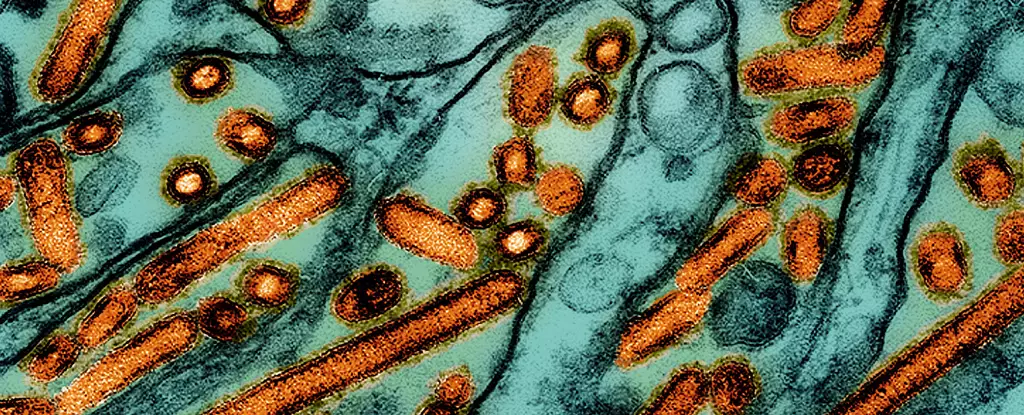The emergence of a severe case of avian influenza in Louisiana has raised alarms concerning the potential for a new pandemic. The elderly patient, who is in critical condition, symbolizes a pivotal moment that may mark the escalation of the H5N1 virus within the human population in the United States. As U.S. health authorities scramble to respond, the significance of this case cannot be overstated. It points to an underlying vulnerability in our surveillance and preparedness protocols, especially as the total number of infections has risen to 61 since the onset of the 2024 outbreak.
The patient in Louisiana, reported to have been exposed to infected birds from backyard flocks, serves as the first serious human case in the country, contrasting sharply with previous cases where individuals exhibited mild symptoms and successfully recuperated at home. The distressing nature of this incident underscores the urgent need for increased vigilance in monitoring and managing potential outbreaks. The age of the patient, compounded by pre-existing health issues, raises additional concerns as it illustrates that certain demographics are particularly susceptible to severe forms of the disease.
The Centers for Disease Control and Prevention (CDC) has detailed that the identified strain belongs to the D1.1 genotype, which has also been associated with severe cases in Canada and in states like Washington. In comparison to the B3.13 genotype—which has been linked to less severe complications—D1.1 exemplifies a more serious threat to public health. The genetic characteristics of this virus warrant extensive investigation to ascertain not only the origins of transmission but also the trajectory it may take as it spreads.
In response to the escalating situation, California has declared a state of emergency, indicative of the seriousness with which state officials regard the outbreak. Governor Gavin Newsom’s preemptive measures aim to bolster governmental resources and streamline response protocols to ensure that agriculture, a cornerstone of California’s economy, remains resilient. Such emergency declarations highlight an essential aspect of public health strategy: the need for quick and decisive action to mitigate risks and safeguard communities.
Amid rising anxieties, experts like Demetre Daskalakis of the CDC remind the public that over two decades of experience with the H5N1 virus has shown its capacity to induce severe illness. Reports from other countries echo similar outcomes, reinforcing fears about a global health crisis. The statistics surrounding H5N1 infections reveal a grim reality—historically, the virus has resulted in mortality rates as high as 50% in certain populations. This factor intensifies the call for coordinated responses at both state and federal levels.
The uncertainties surrounding the potential for asymptomatic transmission and undetected animal-to-human spillovers remain a matter of concern among scientists. As noted by researchers like Rebecca Christofferson from Louisiana State University, the inadequacy of current surveillance systems may hinder timely responses to outbreaks. Without comprehensive monitoring, health authorities may struggle to accurately assess the scope of the situation and implement effective countermeasures.
Epidemiologists are urging necessary vigilance, with professionals like Meg Schaeffer asserting that avian influenza is indeed a looming threat that could breach public health defenses at any moment. She emphasizes the critical factors indicating an increased risk for pandemic emergence, drawing attention to the need for preventive strategies, public education, and research investment.
Future Directions
As preparations unfold, the U.S. has proactively stockpiled avian flu vaccines to prevent human transmission, indicating an essential aspect of public health preparedness. Recent advancements in mRNA vaccine research sparking promising results in animal models, such as ferrets, demonstrate the potential for innovative solutions to combat the virus if it strengthens its hold within human populations.
Moreover, the USDA’s recent federal order mandating proactive monitoring of raw milk illustrates a multifaceted approach to managing transmission vectors—an action highlighting the agricultural sector’s critical role in public health discourse. Policymakers must prioritize comprehensive risk assessments of dairy products and other agricultural commodities to effectively mitigate transmission concerns.
The situation surrounding the avian influenza outbreak in the U.S. necessitates immediate attention, comprehensive research, and collaborative responses at every level of government. The critical condition of the Louisiana patient serves as a stark reminder of the persistent threat posed by infectious diseases that cross the species barrier. Enhanced surveillance, education, and preparedness will be paramount in effectively navigating this public health challenge. The stakes are high, and as history has shown, waiting for a crisis to escalate before acting is no longer an option. Collective action and vigilance are more than a necessity; they are a moral imperative to protect lives.

